
A note from the editor: I expected some people to object to my recent post about The Wa, but I’m glad that Sowat used it a chance for discussion. He emailed me after reading my post to let me know about a recent show of his where he, Lek and Arnaud Liard tried to bring of bit of graffiti’s spirit to a gallery setting. I thought his argument and the whole idea of the show was interesting, so I asked him to contribute this guest post about the project. – RJ
A few days ago, one of RJ’s post titles made me cringe. Documenting The Wa’s work, he wrote, “The Wa brings the street inside, but not in that cheesy ‘I’m a street artist painting on canvas, therefore I’m bringing the street inside’ way”
I was just back from a three-week residency in Marrakech with Lek and Arnaud Liard, organized by David Bloch Gallery. Except for Soccer slogans, Graffiti and Street Art, let alone muralism, seems to be relatively new in Morroco, which in itself was exciting. In addition to painting murals in the Medina and New Town with Local artists Larbi Cherquaoui and Nour Eddine Tilsaghani, we had put together a show with Lek and Arnaud Liard, called ‘Contraband’. Despite our own harsh views on the subject as teenage graffiti writers, most of this show was constituted of canvases… Had we done something cheesy?
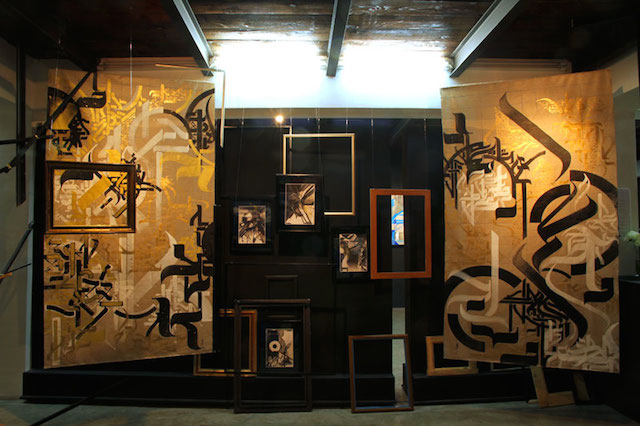
Just like a lot a artists around us, from day one, our main motivation in accepting David Bloch’s proposition, was to find creative ways to keep in touch with 20+ years of writing freely around abandoned buildings when transitioning to the coded atmosphere of a white cube. How could we apply what Graffiti had thought us in this brand new territory?
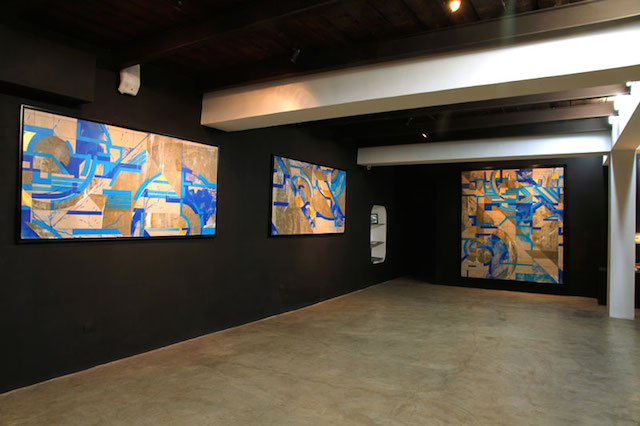
Working on large-scale pieces (the biggest painting being 2 by 4 meters wide) wouldn’t be enough, but painting mostly six hands canvases and drawings with Arnaud Liard was one of the possible answers. While Graffiti has and will always be a collective sport, practiced in hounds or crews, most gallery owners I know in Paris won’t accept collaborative pieces on their walls, thinking that the market won’t buy them. As a justification, they all refer to the 1985 Basquiat/Warhol show that failed back then to seduce collectors (last time I checked, those two-man pieces are worth a bundle now). For once, we were lucky enough to find someone willing to take that kind of a risk.
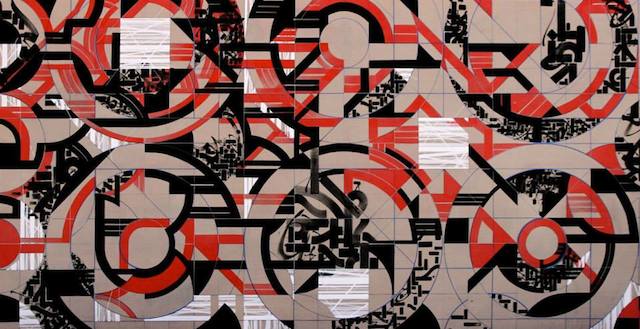
Painting on unprimed canvases was another way of tackling this whole Graffiti/Gallery dilemma. The second you chose to paint a whole show on the cloth’s raw material, without preparing it beforehand, you are not allowed to make any mistakes, all your strokes are final and can’t be erased or fixed, just like when you’re tagging the unprimed walls of the city, which starts to make things interesting.
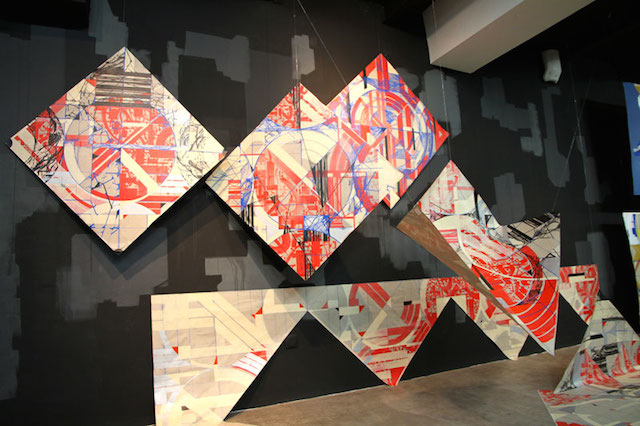
For the rest, the whole concept of the show was centered on the notion of ‘forgery’. Morocco is known for its century old arts and crafts tradition. While prepping for the show, we read all we could on the subjects and decided to ‘steal’ the traditional patterns used by Moroccan craftsman to structure their mosaics (called Zellige), reinterpreting them with our own styles. We then mimicked the shapes and curves of Arab calligraphy just like we imitated the way cloth is sold in the souk, in half of the show, deconstructing the canvases, having them go from traditional American boxes to unframed raw cloth hanging in the air….
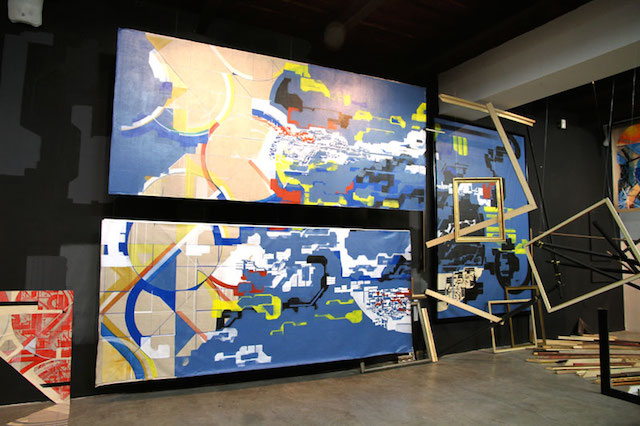
Which brought us to our final idea: having one of our canvases copied by a local forger and placing both canvases in the show without saying which is which. After all, what make a piece of art? Is it the fact that someone paints it or the fact that someone signs it? Does a Murakami piece have less value because his assistants executed it? Modern Graffiti is now seeing it’s first cases of large-scale forgeries, with JonOne recently hitting the courts after an unscrupulous dealer allegedly sold 23 of fake JonOne paintings, so hasn’t forgery become the ultimate proof of an artist’s value?
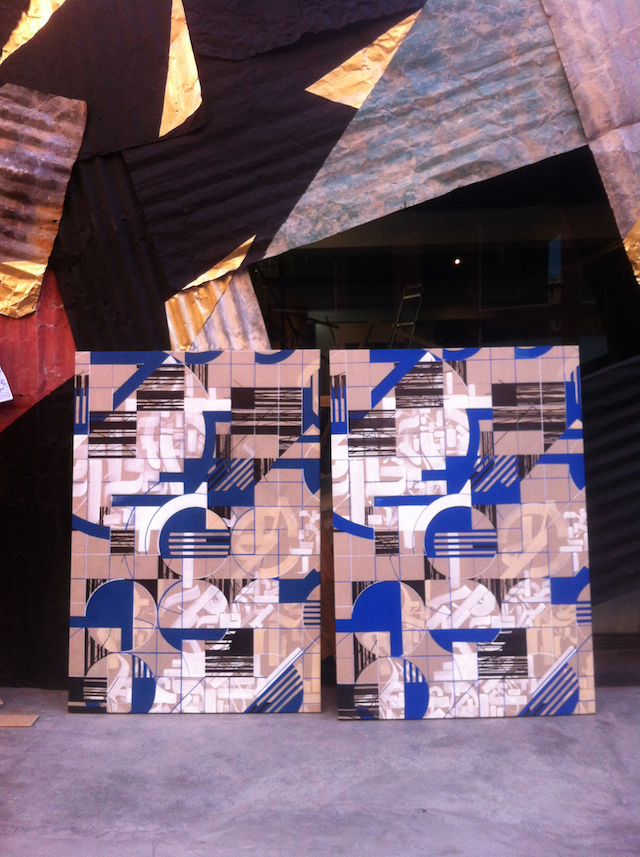
These are the different topics we wanted to raise with Lek and Arnaud Liard through our ‘Contreband’ show. I still don’t know if painting canvases is the right thing to do when going from the Streets to the Gallery, but I’m sure there are many ways out there to do so without looking too cheesy…

The opening took place at David Bloch’s Gallery on February 28th, during the Marrakech Biennale and the exhibition will last until March 29th.
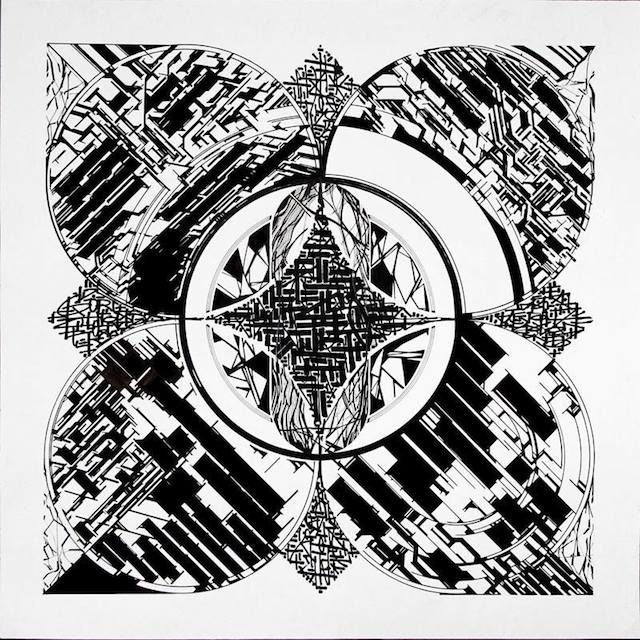
This trailer was released right before the opening if all of this sparked your curiosity:
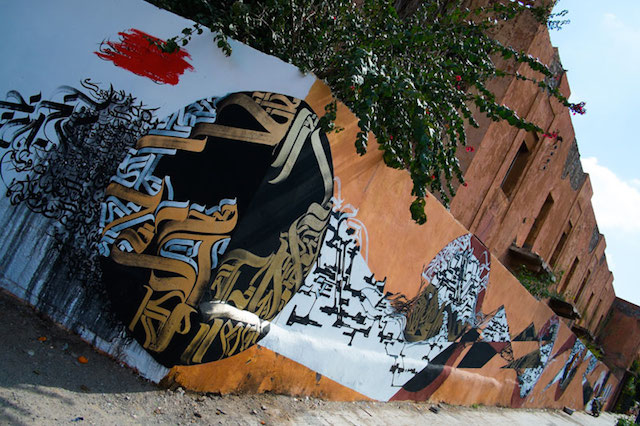

Photos by Louis Brisset courtesy of Sowat
